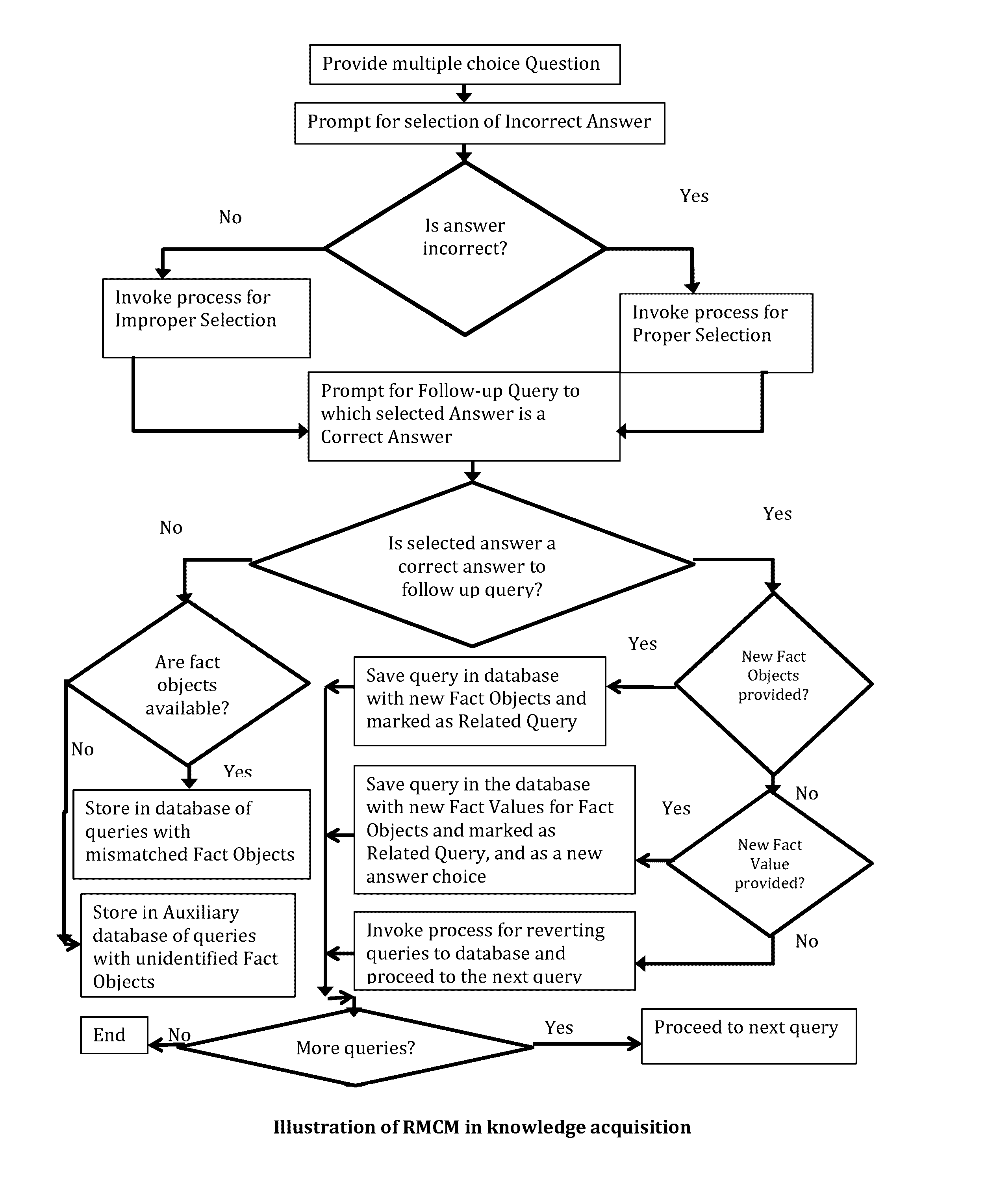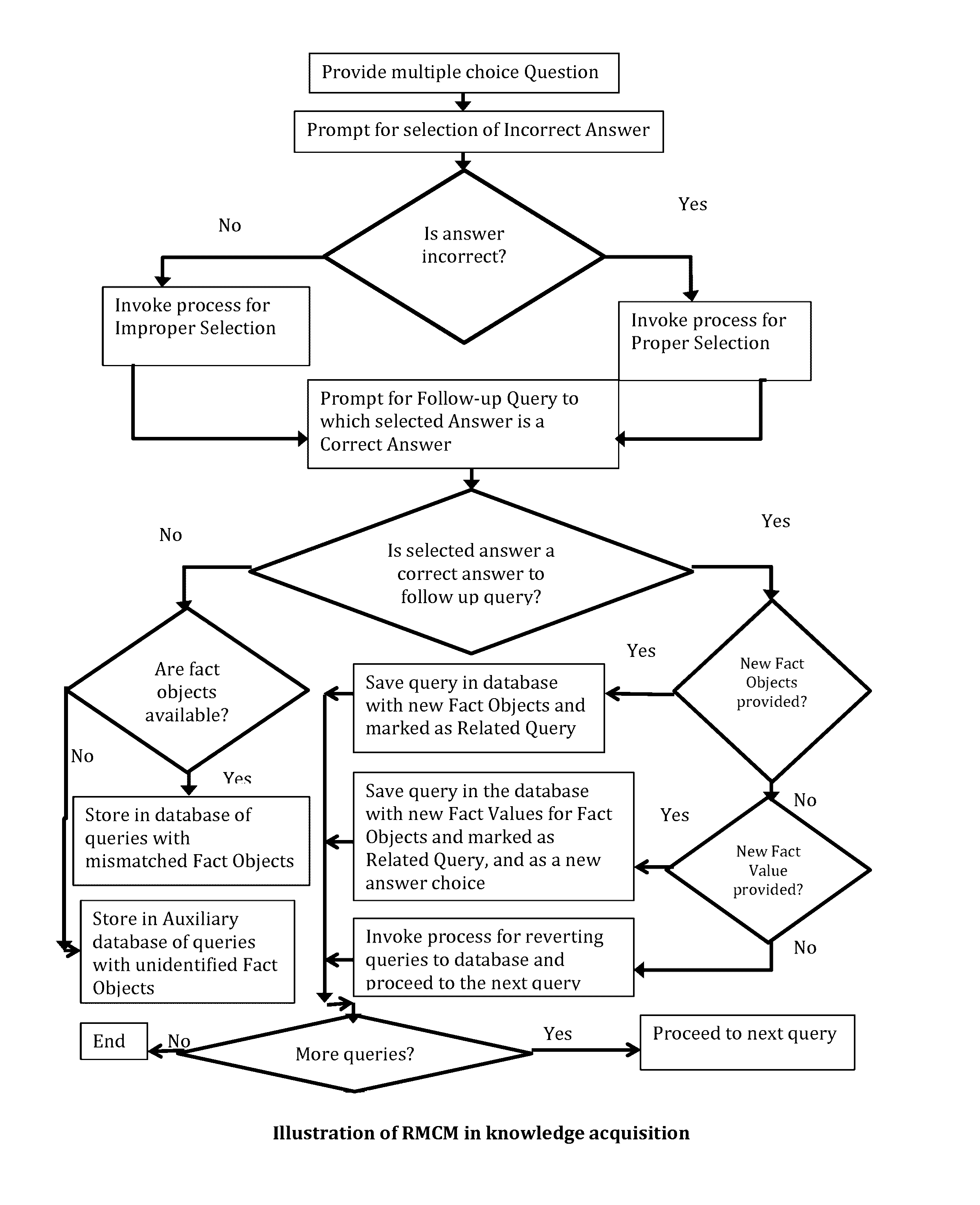Reverse-multiple choice method for knowledge engineering and expert system implementation
a knowledge engineering and multiple choice technology, applied in the field of machine learning and knowledge engineering reverse multiple choice methods, can solve the problems of difficult to spot cheating, high administration costs, and short essays that cannot match the format of mcq, so as to improve the art of expert system development, improve the quality of knowledge engineering, and reduce communication errors
- Summary
- Abstract
- Description
- Claims
- Application Information
AI Technical Summary
Benefits of technology
Problems solved by technology
Method used
Image
Examples
example 1
Fact Object / Fact Value Constructs in RMCM
[0047]Divide and simplify the expression:
[0048]√(10)÷√2=(A)√8(B)2√2(C)√5(D)2√5(E)2√3
[0049]The Correct answer is (C). Answers (A) and (B) are different forms of the same incorrect answer, which may catch the non-alert student. Here RMCM would task the student to “modify the question suitably to make one or more of incorrect answers correct for the changed question.” Thus, the incorrect answer:[0050](A) would be correct if we: change the division “÷” to a subtraction “−” and drop the second square root operation “√” as well as extend the first “√” to cover both the numbers;[0051](B) would be correct if we: change the “÷” to a “−”, drop the second square root operation “√” and extend the first “√” to cover both the numbers;[0052](D) would be correct if we: change the division “÷” to “*” a multiplication; and[0053](E) would be correct if we: change the division “÷” to an addition “+” and drop the second square root operation “√” as well a...
example 2
A Method of Training a Machine by a Human Expert
[0060]The flow diagram of FIG. 1 displays a session such as the one that follows below.
[0061]The following is an illustrative session of RMCM based training dialogue between Human Expert, H, and Machine expert-under-construction, M, wherein a Fact Value (FV) is an instantiation of a Fact Object (FO), case defines a question and a dialogue below is expected to loop iteratively as many times as decided by H:[0062](i) User U defines a case. (U may be=H)[0063](ii) H creates or displays a previously created multiple-choice question Q based on case narrative—Answer Choices (ACs), Fact Objects (FOs), Fact Values (FVs)[0064](iii) Q is stored in database if a new question[0065](iv) U asks M to “scan” question[0066](v) U asks M for an answer[0067](vi) M encounters a FO, recalls Q[0068](vii) M matches FOs sequentially[0069](viii) IF a match, M matches FVs sequentially[0070]a. IF an FV match, M produces for U an answer choice[0071]b. ELSE M reques...
PUM
 Login to View More
Login to View More Abstract
Description
Claims
Application Information
 Login to View More
Login to View More - R&D
- Intellectual Property
- Life Sciences
- Materials
- Tech Scout
- Unparalleled Data Quality
- Higher Quality Content
- 60% Fewer Hallucinations
Browse by: Latest US Patents, China's latest patents, Technical Efficacy Thesaurus, Application Domain, Technology Topic, Popular Technical Reports.
© 2025 PatSnap. All rights reserved.Legal|Privacy policy|Modern Slavery Act Transparency Statement|Sitemap|About US| Contact US: help@patsnap.com



